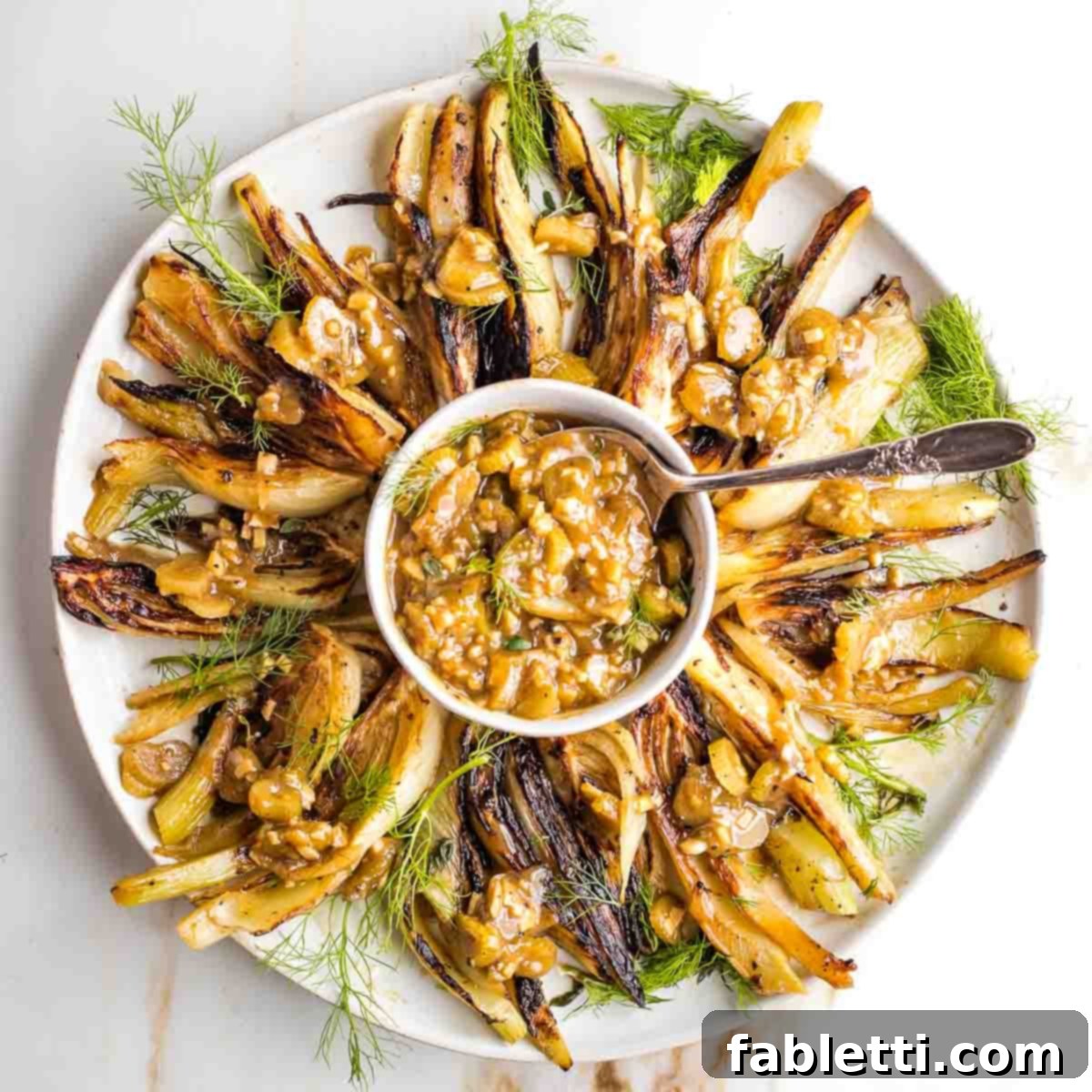Unveiling the Magic of Braised Fennel: A Simple Yet Elegant Side Dish
Embark on a culinary journey and discover the delightful transformation of fennel with this incredibly easy braised fennel recipe. Far from its raw, assertive licorice notes, fennel becomes exquisitely sweet, tender, and deeply flavorful when gently braised. This sophisticated yet straightforward side dish is perfect for any occasion, from a festive holiday gathering to a cozy weeknight dinner, promising to charm even the most skeptical palates.
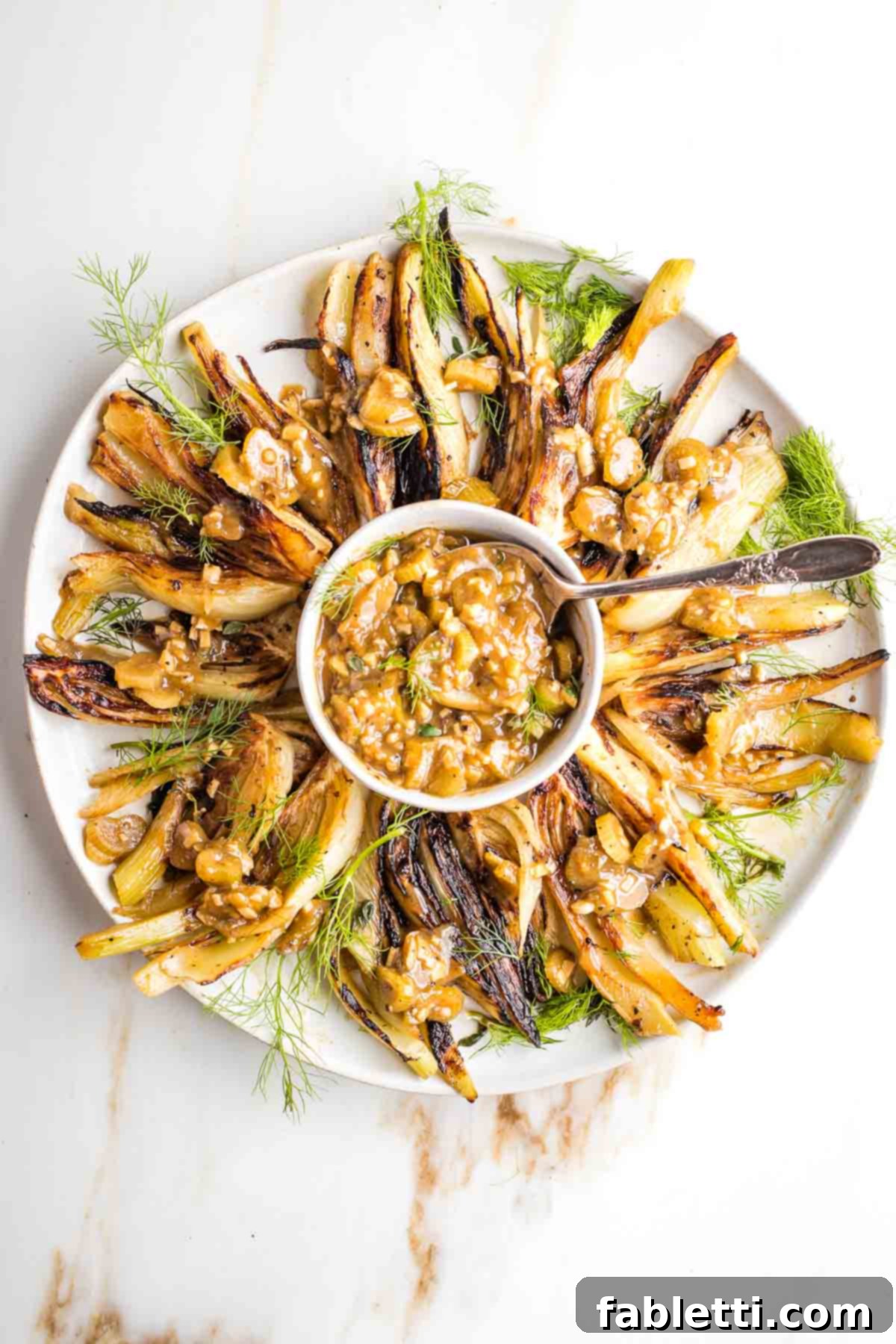
This recipe spotlights large fennel bulbs, skillfully cut into wedges and braised on the stovetop. This method is particularly advantageous for holidays like Thanksgiving or Rosh Hashanah when precious oven space is often at a premium. By utilizing your stovetop, you free up your oven for other main dishes and roasts. We aim to introduce variety and elegance to your meal. When cooked, fennel sheds its sharp anisy character, mellowing into a sweet, almost buttery texture that offers a surprisingly delicious and beautiful addition to any plate.
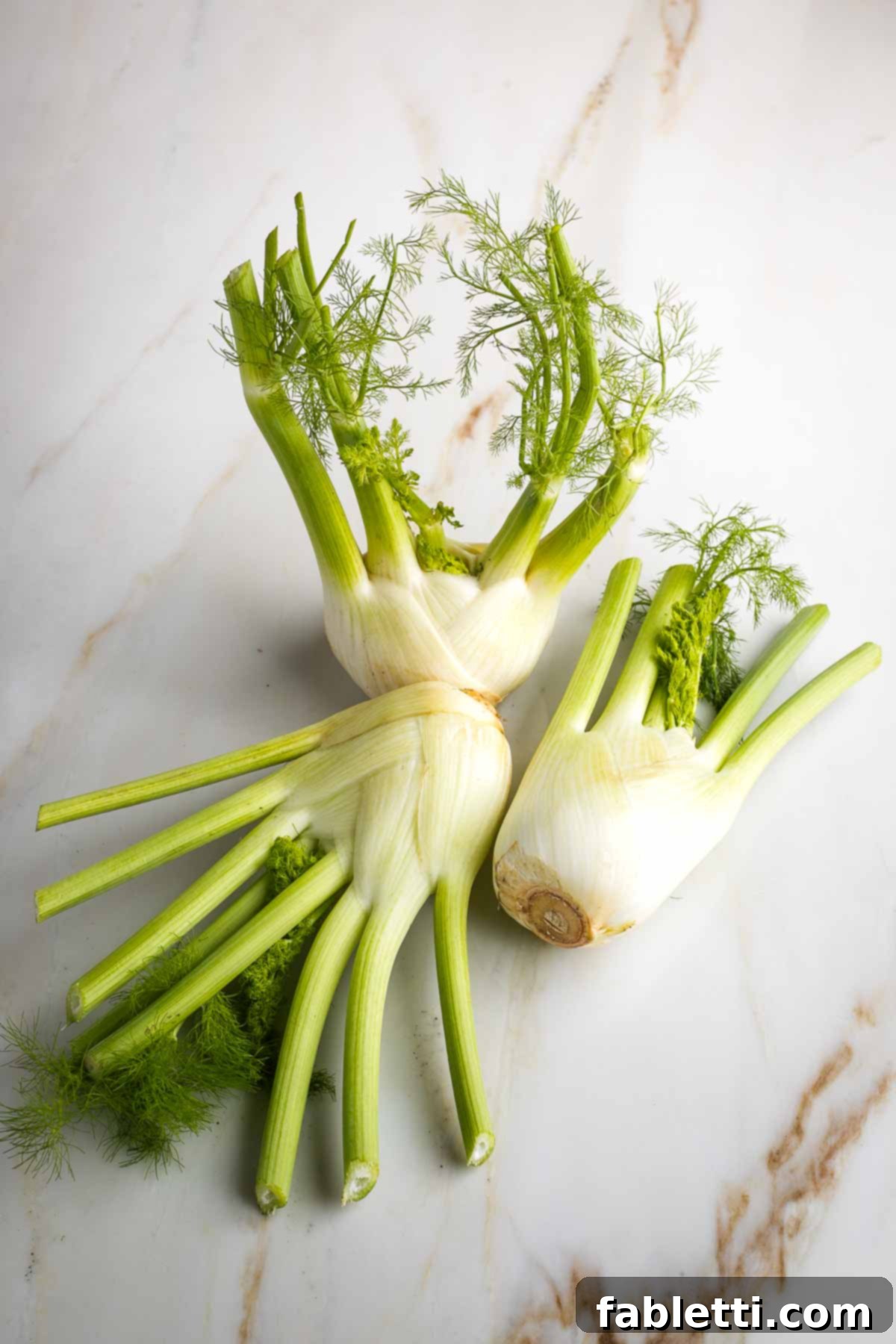
What is Fennel and Why Braise It?
Fennel, a versatile vegetable with a subtle anise flavor when raw, undergoes a remarkable transformation during cooking. It’s composed of a crisp white bulb, green stalks, and delicate, feathery fronds. While often enjoyed raw in salads, braising truly unlocks its hidden potential, transforming its firm texture into something wonderfully tender and its distinct flavor into a gentle, caramelized sweetness. Braising involves searing the vegetable at a high temperature, then simmering it in liquid in a covered pan. This two-step process not only creates a beautiful golden crust but also ensures the fennel cooks through slowly, absorbing the rich flavors of the broth and seasonings, resulting in a side dish that’s both comforting and gourmet.
The Surprising Health Benefits of Fennel
Beyond its delicious taste and unique texture, fennel is also packed with nutritional value. It’s an excellent source of Vitamin C, a powerful antioxidant that supports immune health. Fennel also provides dietary fiber, aiding in digestion and promoting gut health. Additionally, it contains potassium, which is important for blood pressure regulation, and a variety of other beneficial compounds like folate, manganese, and a good amount of antioxidants. Incorporating braised fennel into your diet is a flavorful way to boost your nutrient intake and enjoy a healthy, vibrant vegetable.
Key Ingredients & Flavorful Substitutions
Creating this exquisite braised fennel dish requires just a few simple ingredients, many of which you likely already have on hand. Each component plays a crucial role in developing the rich, savory, and sweet profile of the final dish. Here’s a closer look at what you’ll need and how you can adapt the recipe to your pantry or dietary preferences:

- Fennel: The star of the show! Look for firm, white bulbs with fresh, green fronds. While fennel is ideal, this braising method can also be adapted for other sturdy vegetables. Thick wedges of sweet onions, for instance, would also work beautifully, developing a similar sweetness and tenderness.
- Broth: Vegetable broth forms the savory base of our braising liquid. I prefer to use homemade vegetable stock for its superior flavor and control over ingredients. If you opt for store-bought broth, always check the label for salt content and adjust the amount of added salt in the recipe accordingly to prevent over-seasoning. Low-sodium varieties are often a good choice.
- White Wine: A splash of white wine adds acidity and complexity, helping to deglaze the pan and lift all those delicious browned bits from the bottom. If you prefer not to cook with alcohol, a dry beer can be a fantastic alternative, as its alcohol will burn off during cooking, leaving a wonderful depth of flavor. For an alcohol-free option, substitute with a rice wine vinegar or even fresh lemon juice. The acidity is key to deglazing the pan and balancing the dish’s richness.
- Miso: This fermented soybean paste is a secret weapon for building incredible umami flavor, especially in vegetarian dishes where you might miss the depth typically provided by chicken stock. Light miso is generally preferred for its milder, sweeter profile. If miso isn’t available, a good quality Dijon mustard can offer a similar savory tang and depth to the braising liquid.
- Herbs and Spices: Fresh thyme sprigs are my personal preference, lending an earthy, aromatic note that complements the fennel beautifully. However, fresh oregano or rosemary would also be excellent choices, each adding their unique fragrance and taste. Don’t be shy about experimenting with your favorite Mediterranean herbs! A pinch of red pepper flakes can also add a subtle warmth if you enjoy a hint of spice.
- Extra Virgin Olive Oil: Essential for searing the fennel and building the initial flavor base. Choose a good quality olive oil.
- Coarse Sea Salt and Black Pepper: Fundamental seasonings that enhance all the other flavors. Adjust to your taste.
- Garlic: Minced garlic adds a fragrant, pungent kick that is indispensable in many savory dishes, including this one.
Preparing Fennel: A Step-by-Step Guide
Proper preparation is key to ensuring your braised fennel is perfectly clean and holds its shape during cooking. Fennel bulbs can sometimes trap dirt between their layers, so a thorough cleaning is important. Here’s how to get your fennel ready for braising:
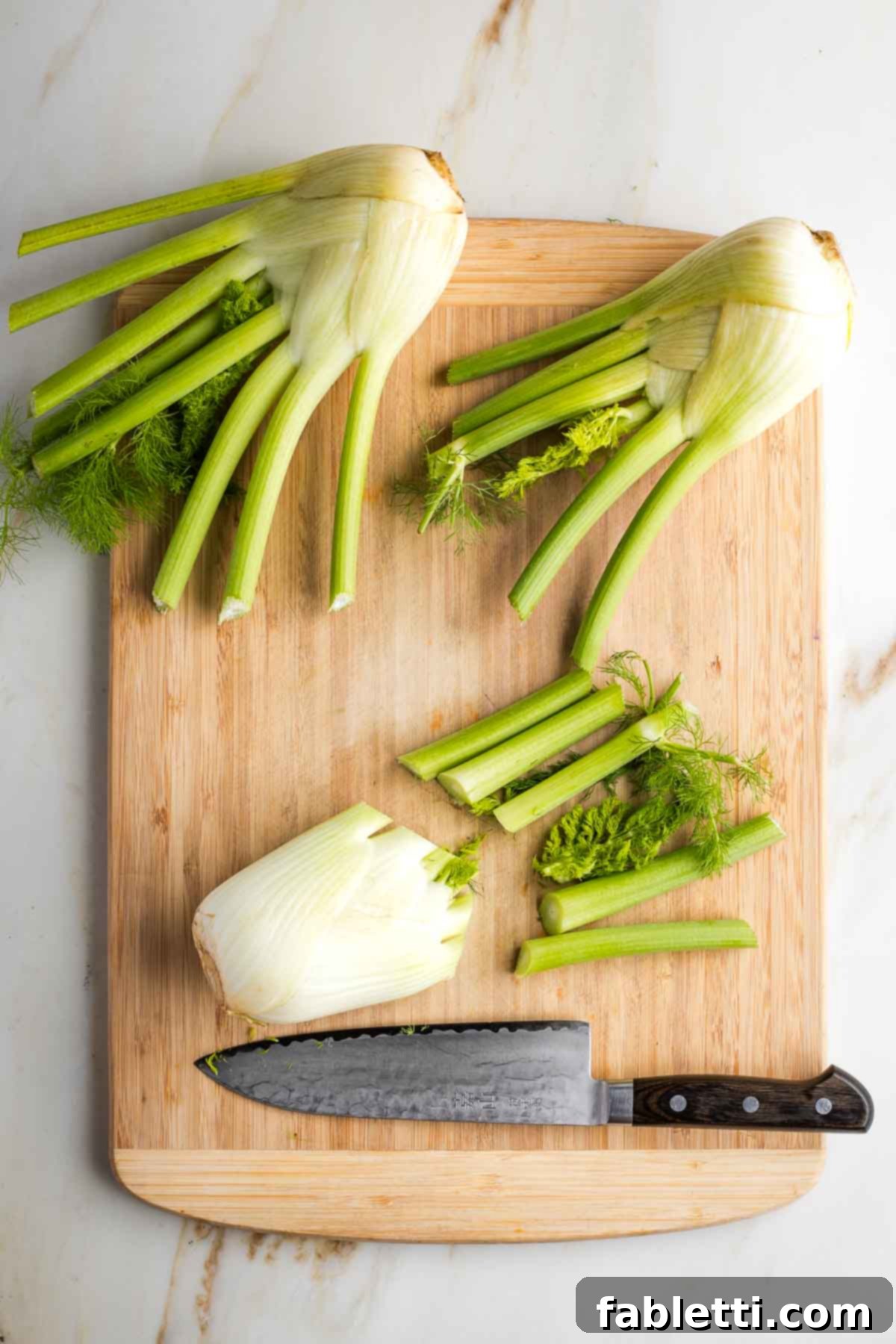
Step 1: Trim the Root End and Stalks. Begin by cutting a very thin sliver off the root end of the fennel bulb to remove any dirty or tough parts. Then, carefully cut off the long green stalks and the feathery fronds from the bulb. Set the fronds aside for garnish later.

Step 2: Halve the Fennel Bulb. Place the trimmed fennel bulb upright on a cutting board. Using a sharp knife, carefully cut it in half straight down through the center core. This will give you two even halves.
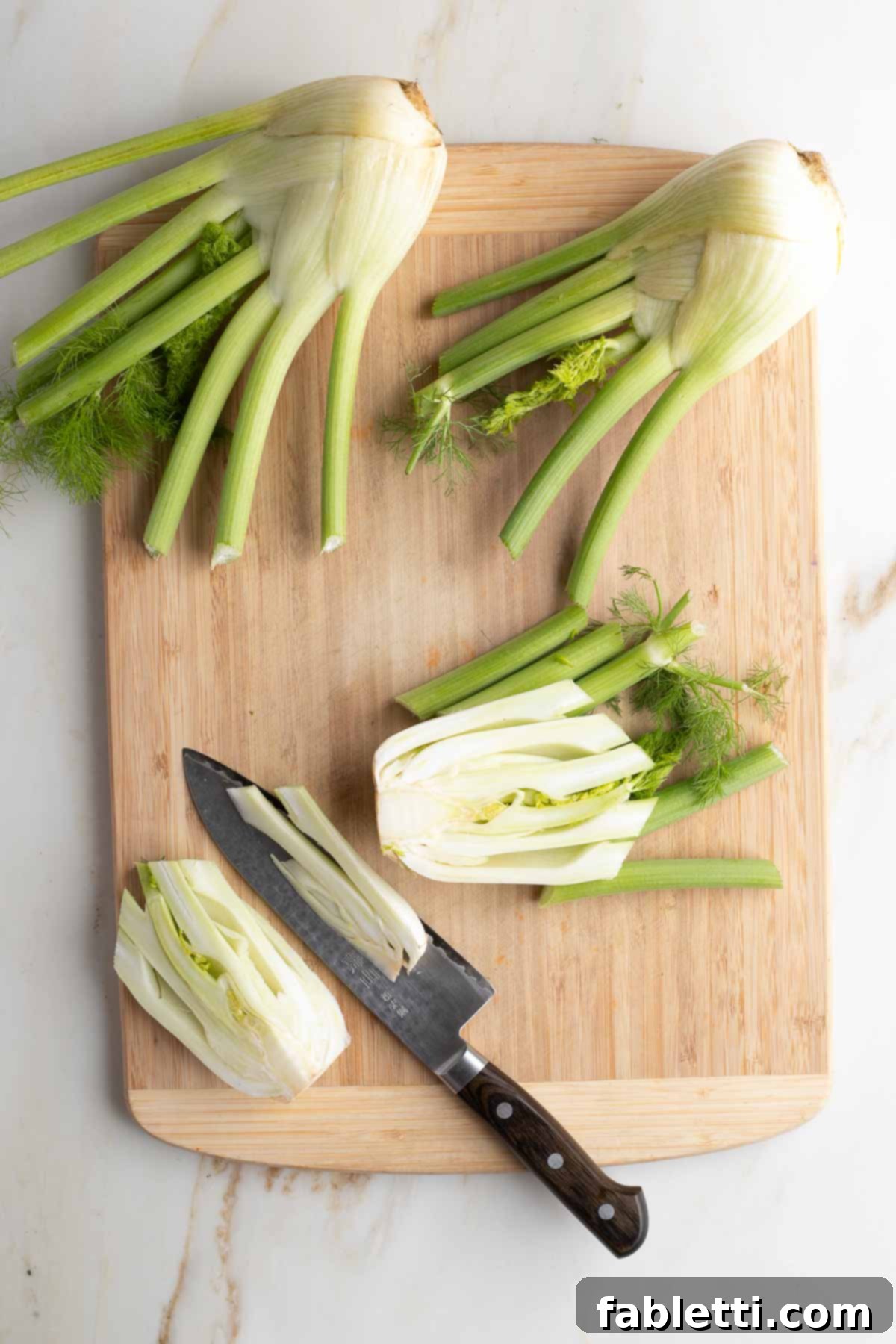
Step 3: Cut into Wedges. Take each fennel half and cut it lengthwise into 4-5 wedges. The trick here is to ensure each wedge has a piece of the core intact. The core acts as a natural binder, holding the layers of the fennel together during braising, preventing them from falling apart. Depending on the size of your bulbs, you should get 8-10 wedges per bulb.
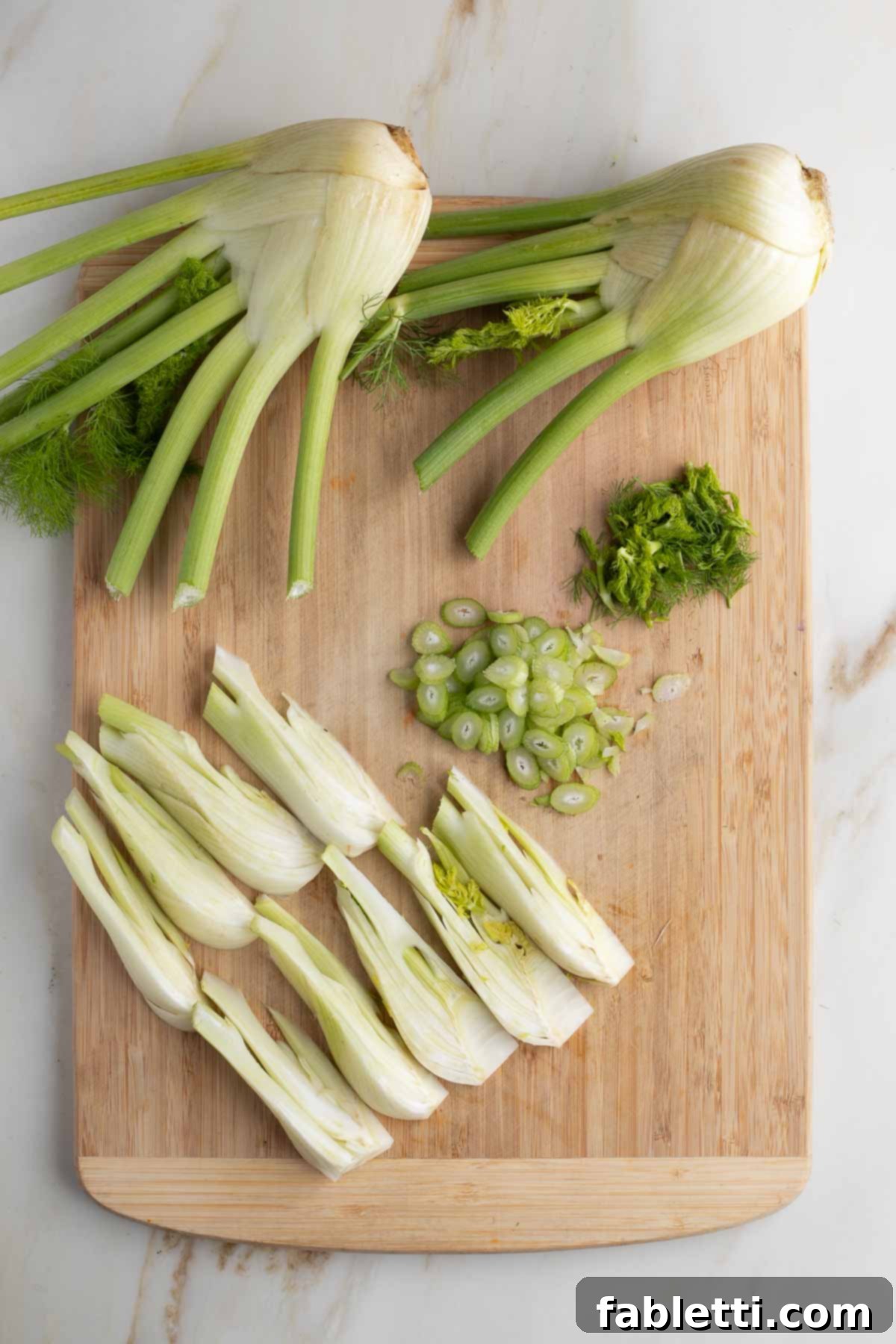
Step 4: Prepare Stalks and Fronds. Don’t discard the stalks entirely! Thinly slice the lighter, more tender part of the fennel stalks and set them aside. These will be added to the braising liquid for extra flavor and texture. Roughly chop the reserved fronds and keep them separate to use as a fresh, aromatic garnish just before serving.
Cleaning Tip: Fennel can sometimes hide dirt between its layers. I find it effective to give the outside of the bulb a quick scrub with a vegetable brush or loofah before cutting. Then, once the fennel is cut into wedges, you can easily rinse between the layers under running water to ensure it’s completely clean.
Mastering the Art of Braised Fennel: Cooking Instructions
Once your fennel is prepped, the cooking process is straightforward and incredibly rewarding. The key steps involve searing for flavor development, deglazing to capture all the rich bits, and a gentle simmer to achieve that signature tenderness and sweetness.
Begin by heating a large, heavy-bottomed skillet over medium-high heat. I highly recommend using a cast iron skillet, as it provides exceptional heat retention and distributes heat evenly, which is crucial for achieving a perfect sear.
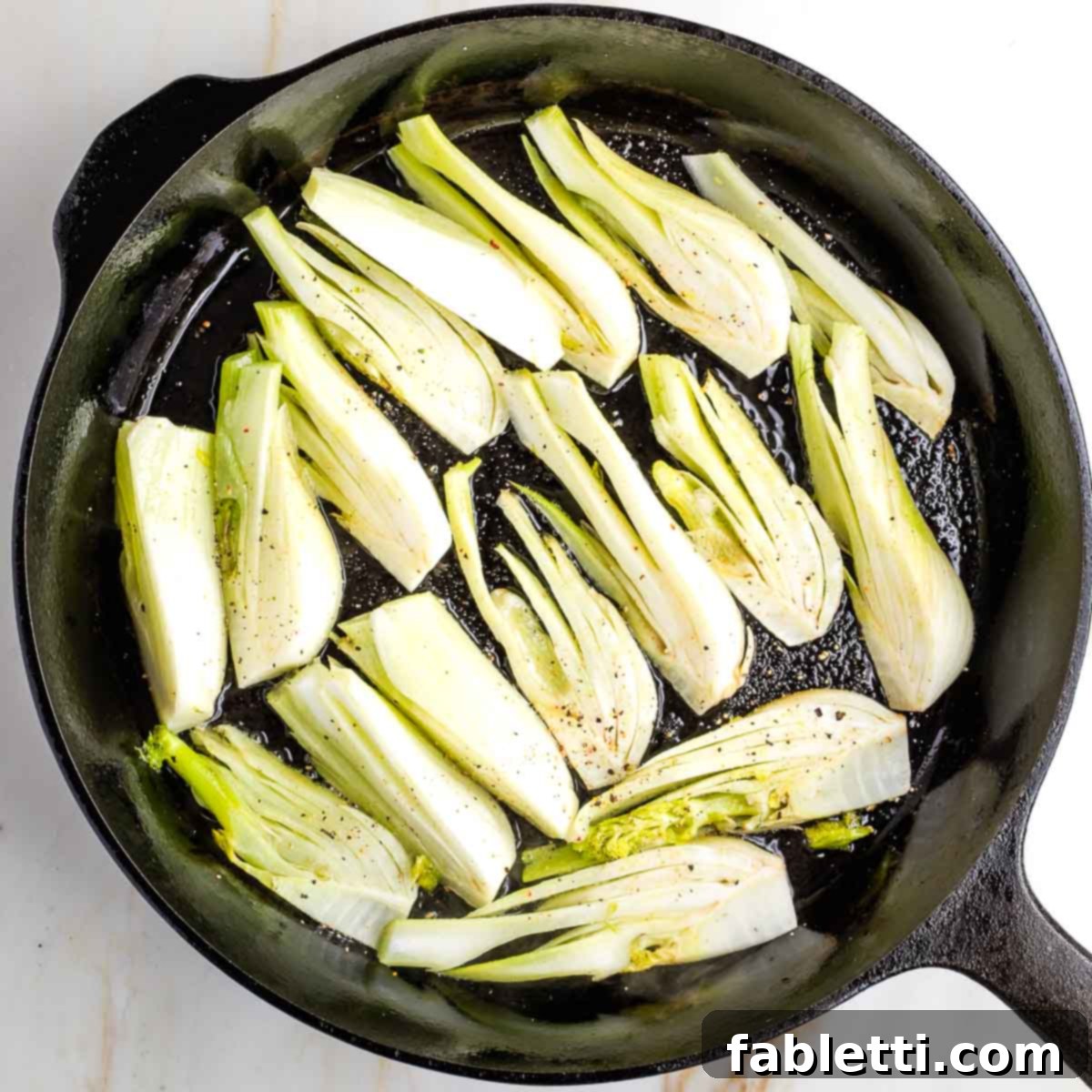
Step 1: Sear the Fennel. Once the skillet is hot, swirl in the extra virgin olive oil. Arrange the fennel wedges in a single layer, ensuring they have enough space to brown properly. Depending on the size of your skillet and the amount of fennel, you may need to work in two batches to avoid overcrowding the pan. Season generously with coarse sea salt and freshly ground black pepper.
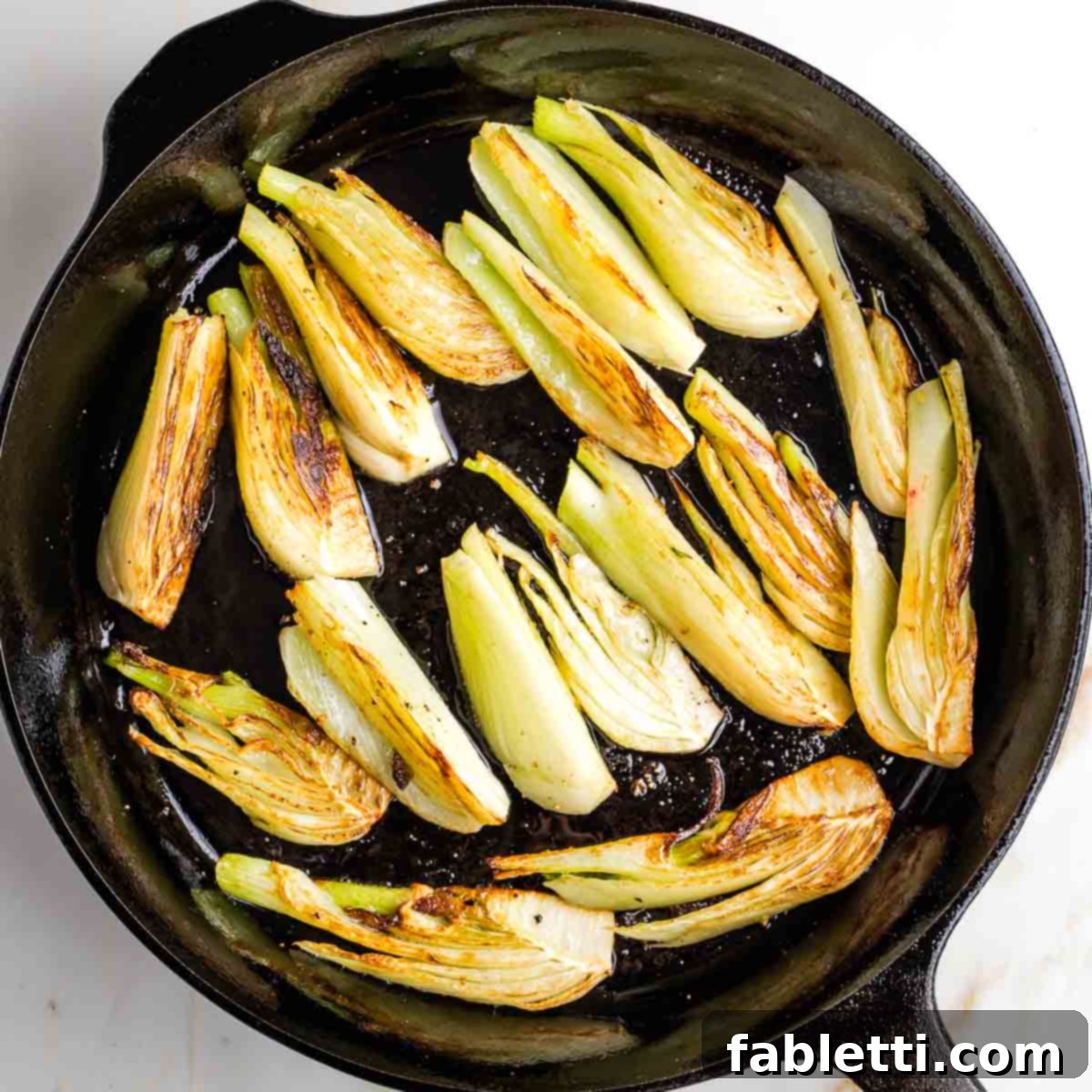
Step 2: Brown Both Sides. Allow the fennel wedges to cook undisturbed for a couple of minutes until they develop a beautiful golden-brown crust. This caramelization is vital for building deep flavor. Use tongs to carefully turn each wedge over and repeat the browning process on the other side. This initial searing seals in flavor and adds a textural contrast.
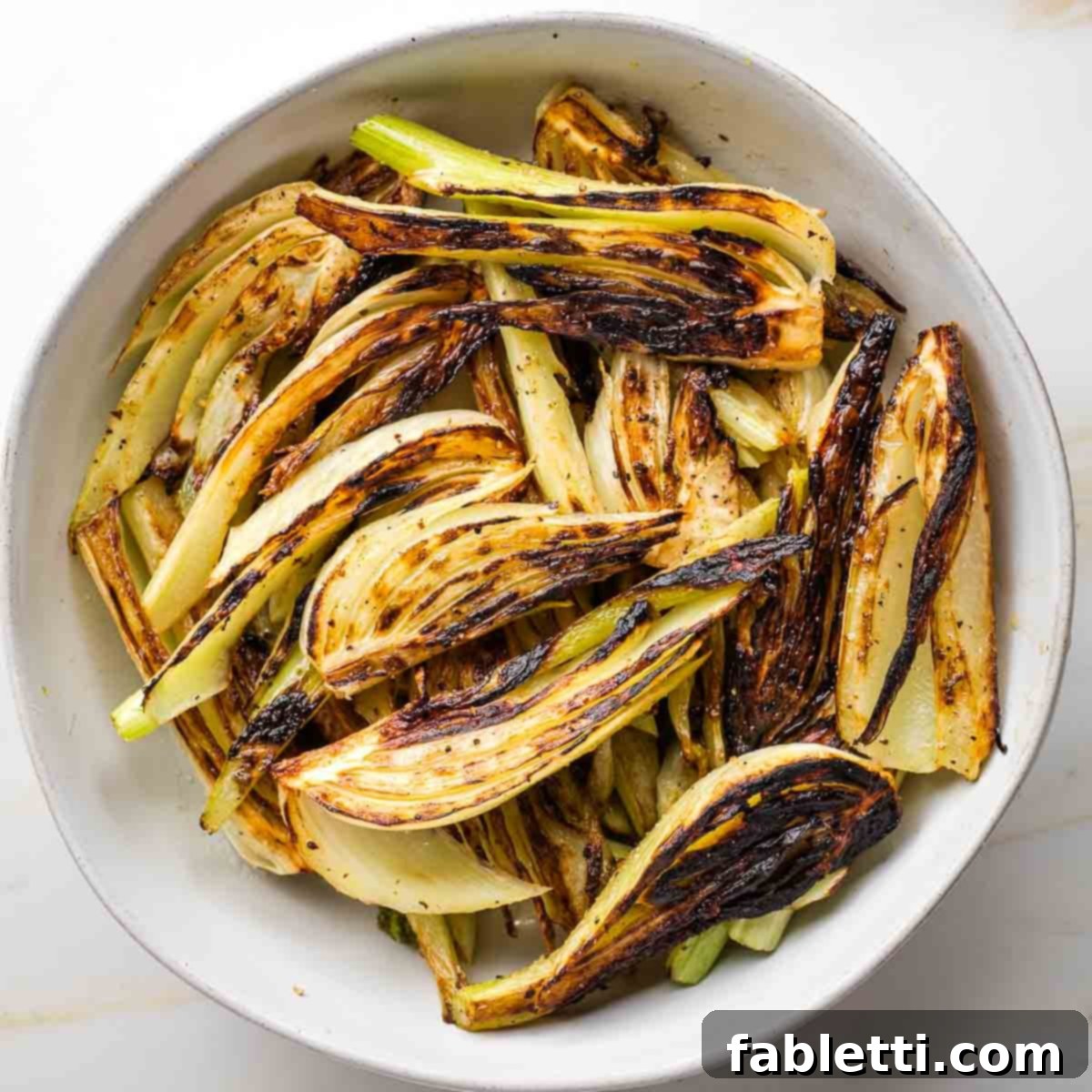
Step 3: Remove Seared Fennel. As each batch of fennel wedges finishes browning, remove them from the skillet and transfer them to a separate plate or bowl. Continue this process until all the fennel has been seared to a lovely golden hue.

Step 4: Build the Braising Liquid Base. Reduce the heat to medium. Add the minced garlic and the thinly sliced fennel stalks to the pan. Cook, stirring occasionally, until the garlic becomes fragrant, which usually takes about 1 minute. Be careful not to burn the garlic. Now, it’s time to deglaze: pour in the white wine (or your chosen substitute) and use a wooden spoon or spatula to scrape up all those delicious browned bits from the bottom of the pan. These bits are packed with flavor and will enrich your sauce.

Step 5: Incorporate Miso into Broth. In a separate small bowl, whisk the light miso paste into the vegetable broth until it’s fully dissolved. This ensures the miso is evenly distributed and prevents clumps in your sauce. Pour this flavorful broth mixture into the pan with the garlic and deglazed wine, mixing well to combine all the elements.

Step 6: Begin the Braising. Return the browned fennel wedges to the skillet, arranging them in a single layer over the liquid. There should be enough liquid to partially cover the fennel; if not, add a bit more vegetable broth until the fennel is submerged about halfway. Spread the fresh thyme sprigs evenly over the vegetables, allowing their fragrance to infuse the dish as it cooks.
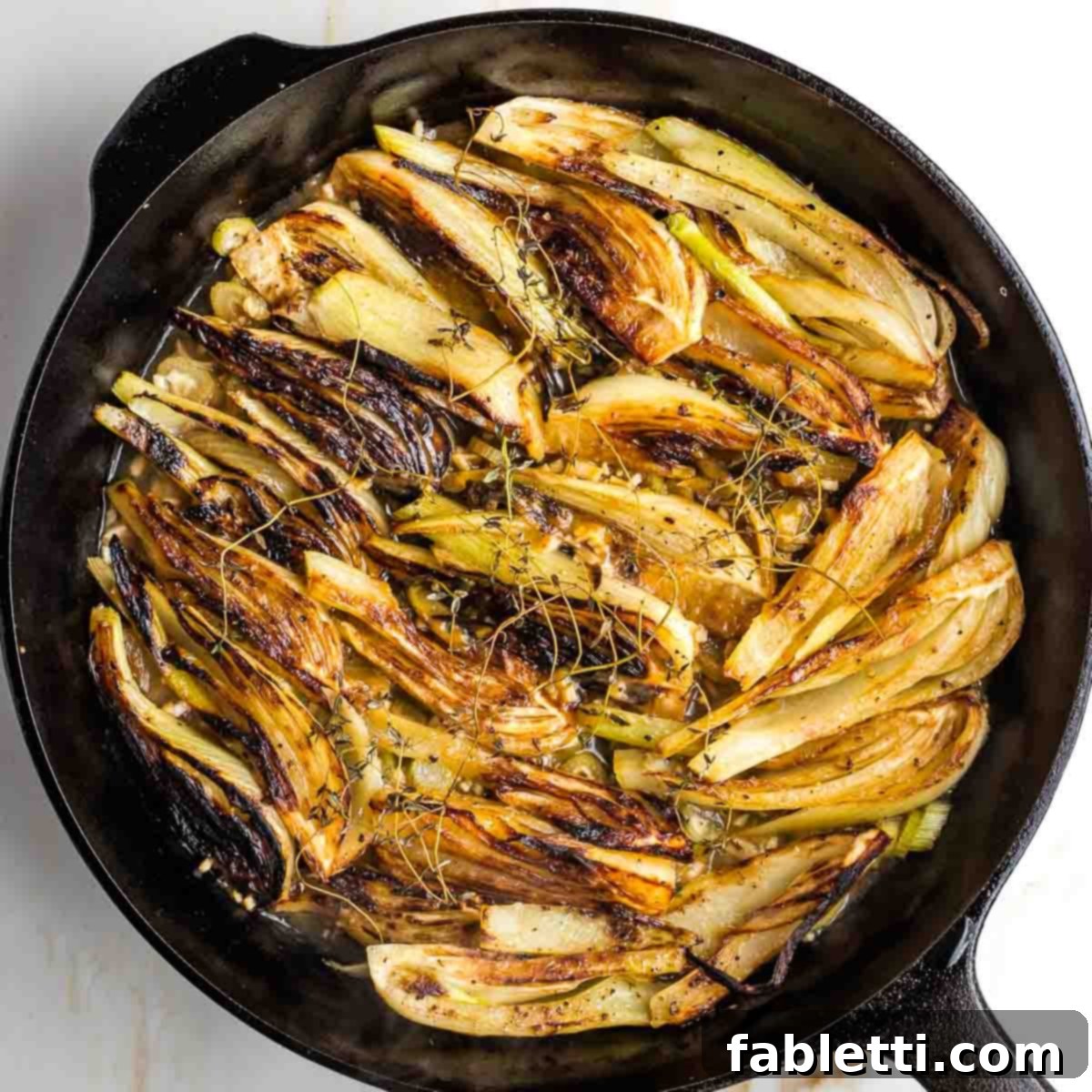
Step 7: Simmer to Perfection. Reduce the heat to a gentle simmer, just enough to keep the liquid bubbling softly. Cover the skillet with a lid and let the fennel braise for about 20 minutes. The exact cooking time may vary depending on how thick your fennel slices are. The goal is for the fennel to become super tender when pierced with a fork, with a luscious, caramelized sweetness.
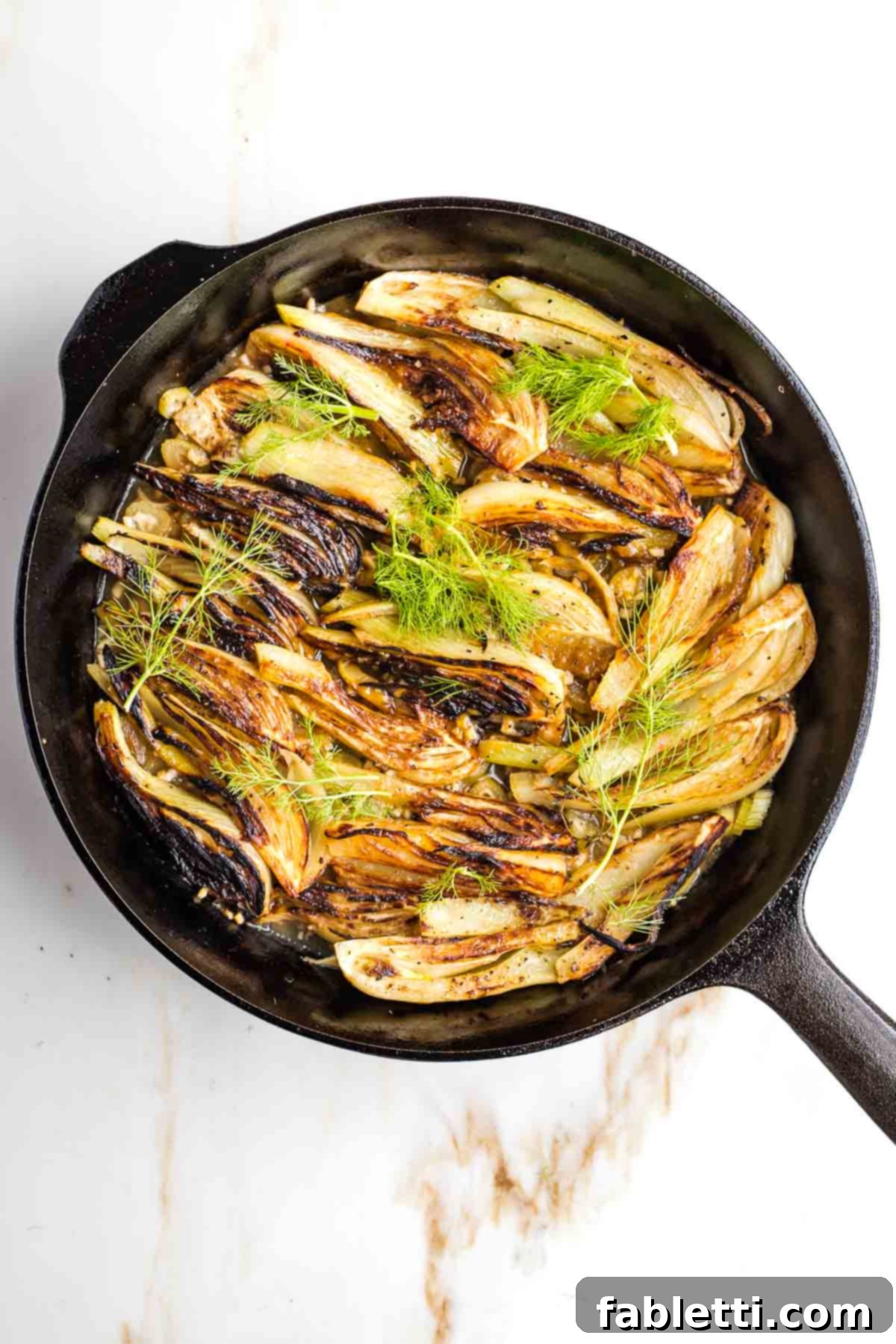
Step 8: Final Touches and Serving. Once the fennel is tender, remove it from the skillet and arrange the braised wedges onto a serving platter. If the remaining sauce in the pan is too thin, increase the heat slightly and let it reduce for a minute or two until it reaches your desired consistency. Spoon some of the delicious garlic and fennel stalks from the sauce over the braised fennel. Garnish generously with the reserved fresh fennel fronds and/or a few fresh thyme leaves. Serve warm or at room temperature – it’s delicious either way!
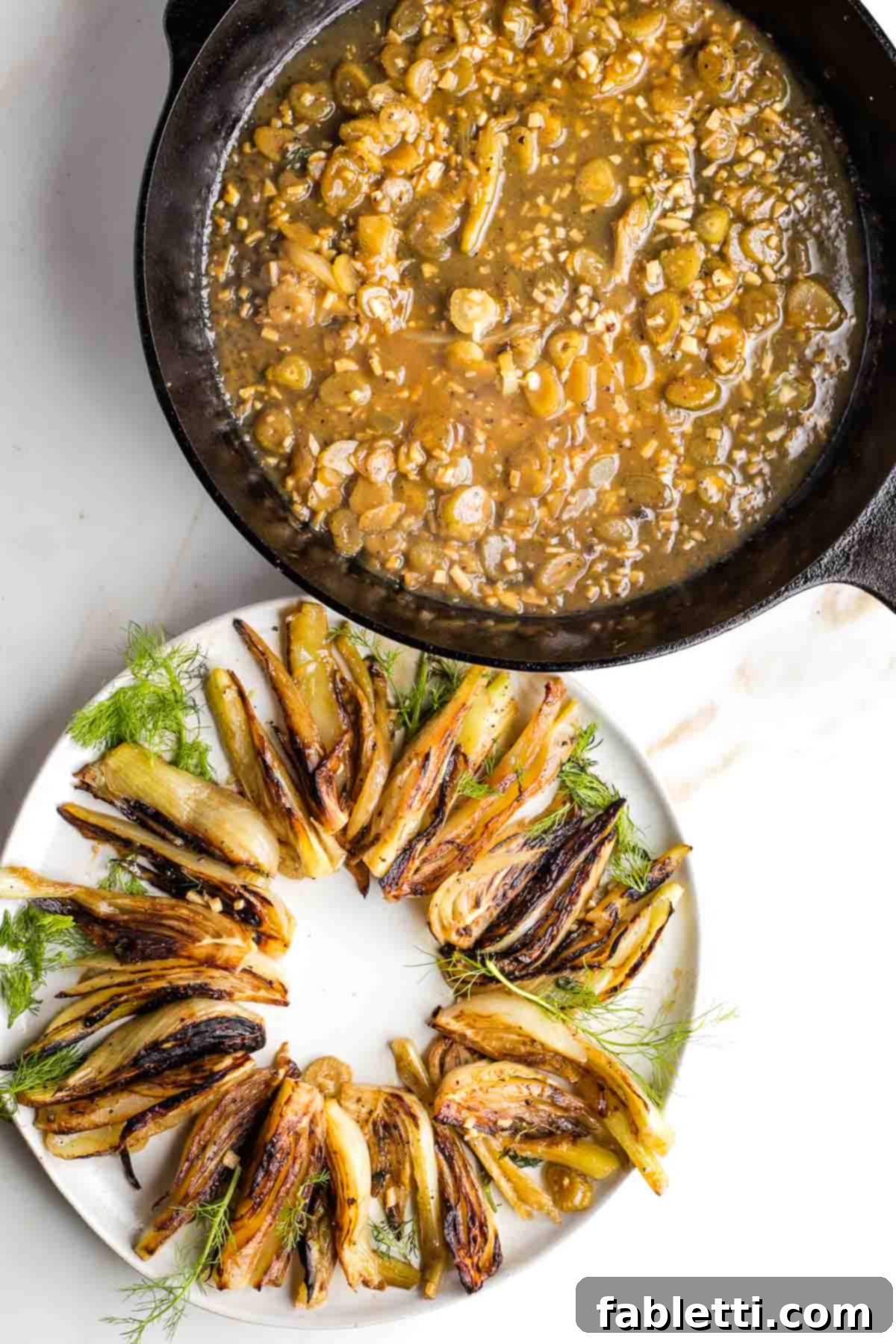
Step 9: Presenting the Sauce. For an elegant presentation, drizzle just a bit of the rich braising sauce over the plated fennel. Transfer any remaining sauce to a small bowl and pass it separately at the table, allowing everyone to add as much as they like. This allows the beautiful caramelized fennel to shine while offering the delicious sauce as an accompaniment.
Debra’s Pro Tips for Perfect Braised Fennel
Elevate your braised fennel to restaurant quality with these expert tips and tricks:
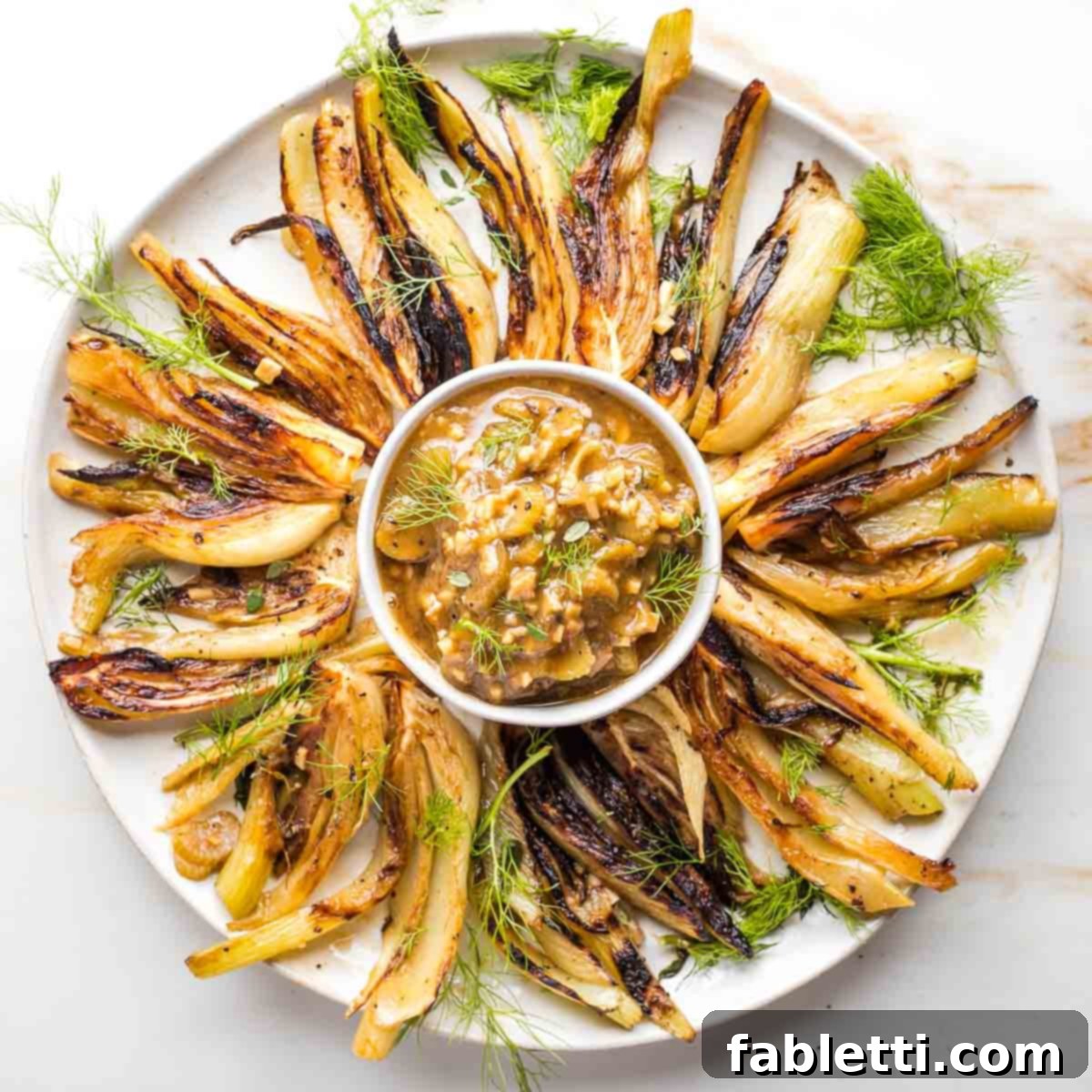
- Adjusting Sauce Consistency: After plating the fennel wedges, if the remaining sauce in the pan is too thin, simply cook it over medium heat, stirring occasionally, until it thickens to your desired consistency. Conversely, if the sauce becomes too thick, whisk in a tablespoon or two of extra broth until it’s just right.
- Thoughtful Sauce Presentation: Drizzle a modest amount of the sauce directly over the fennel on the platter. For those who love extra, pass the remaining sauce in a separate elegant bowl, allowing guests to serve themselves.
- Pan Space Management: Don’t worry if your fennel wedges don’t fit in a single layer in your pan during the initial searing stage. Fennel bulbs shrink considerably as they cook and tenderize. By the time you return them to the pan for braising, they will likely fit comfortably in a single layer.
- Make-Ahead Convenience: This braised fennel is an excellent make-ahead dish, perfect for busy hosts. Prepare it entirely in advance, then gently reheat it, covered with foil, in a 350°F (175°C) oven for about 15 minutes, or until warmed through.
- Conquering Licorice Doubters: For anyone who claims not to like fennel because of its perceived licorice flavor, encourage them to try this braised version. The cooking process completely transforms the flavor profile, shedding any anisy notes and replacing them with a subtle, sweet, and savory taste that is universally appealing. It’s a fantastic way to convert even the most skeptical eaters!
Your feedback means the world to us! If you tried this recipe, please consider leaving a five-star rating and a comment below. We also love seeing your creations! Share your photos on Instagram by tagging me @dkhealthcoach and using the hashtag #debraklein.
📖 Braised Fennel Recipe
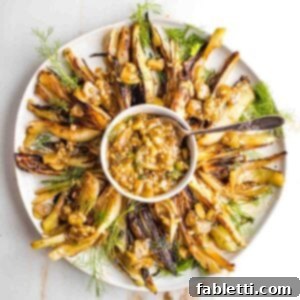
Braised Fennel
Author: Debra Klein
Fall in love with fennel with this easy recipe for braised fennel. It’s sweet, savory, beautiful, and utterly delicious, making it a perfect side dish.
Rate this Recipe
Pin Recipe
5 mins
25 mins
Side Dish
American
4
81 kcal
Equipment
- 12″ Cast Iron Skillet
- Tongs
Ingredients
- 3 Bulbs Fennel
- 2 tbsp extra virgin olive oil
- ½ tsp coarse sea salt
- ½ tsp black pepper
- 4 cloves garlic minced
- 2 tbsp white wine vinegar (or white wine)
- 1 cup vegetable broth
- 1 tsp light miso
- 4-5 fresh thyme sprigs
Instructions
- Prep Fennel: Cut a very thin sliver off the dirty bottom of the fennel bulb. Trim the green stalks and fronds from the bulb, reserving the fronds for garnish. Thinly slice the lighter part of the stalk and set aside. Cut each bulb in half through the center, then cut each half into 4-5 wedges, ensuring each wedge retains a piece of the core to hold it together.
- Sear Fennel: Heat a large skillet (preferably cast iron) over medium-high heat. Swirl in the olive oil. Arrange fennel wedges in a single layer; you may need to work in batches. Sprinkle with salt and pepper. Sear for about 2 minutes per side until golden brown. Transfer seared fennel to a dish.
- Build Sauce Base: Reduce heat to medium. Add the minced garlic and sliced fennel stalks to the pan. Cook, stirring, until fragrant (about 1 minute). Deglaze the pan with white wine vinegar (or white wine), scraping up any browned bits.
- Add Broth and Miso: Whisk the light miso into the vegetable broth until dissolved, then pour into the pan. Bring to a simmer, stirring occasionally.
- Braise Fennel: Return the seared fennel to the pan, arranging it in a single layer on top of the liquid. Top with thyme sprigs. Reduce heat to low, cover, and simmer for 20 minutes, or until fennel is super tender and caramelized when pierced with a fork.
- Serve: Remove fennel wedges to a plate. If the sauce is too thin, let it simmer uncovered for a minute to thicken. Spoon some sauce over the fennel and pour the rest into a small serving dish. Garnish with reserved fennel fronds and/or fresh thyme leaves. Serve warm or at room temperature.
Nutrition Information (per serving)
The nutrition calculations were done using online tools and are estimates. To obtain the most accurate representation of the nutritional information, you should calculate it with the actual ingredients you used. You are ultimately responsible for ensuring that any nutritional information is accurate, complete, and useful.
- Calories: 81 kcal
- Carbohydrates: 2g
- Protein: 1g
- Fat: 8g
- Saturated Fat: 1g
- Polyunsaturated Fat: 1g
- Monounsaturated Fat: 6g
- Sodium: 348mg
- Potassium: 19mg
- Fiber: 1g
- Sugar: 0.4g
- Vitamin A: 51IU
- Vitamin C: 2mg
- Calcium: 7mg
- Iron: 0.3mg
Please leave a review below, then snap a picture and tag me @dkhealthcoach or use hashtag #dkhealtcoach on Instagram so I can see it!
